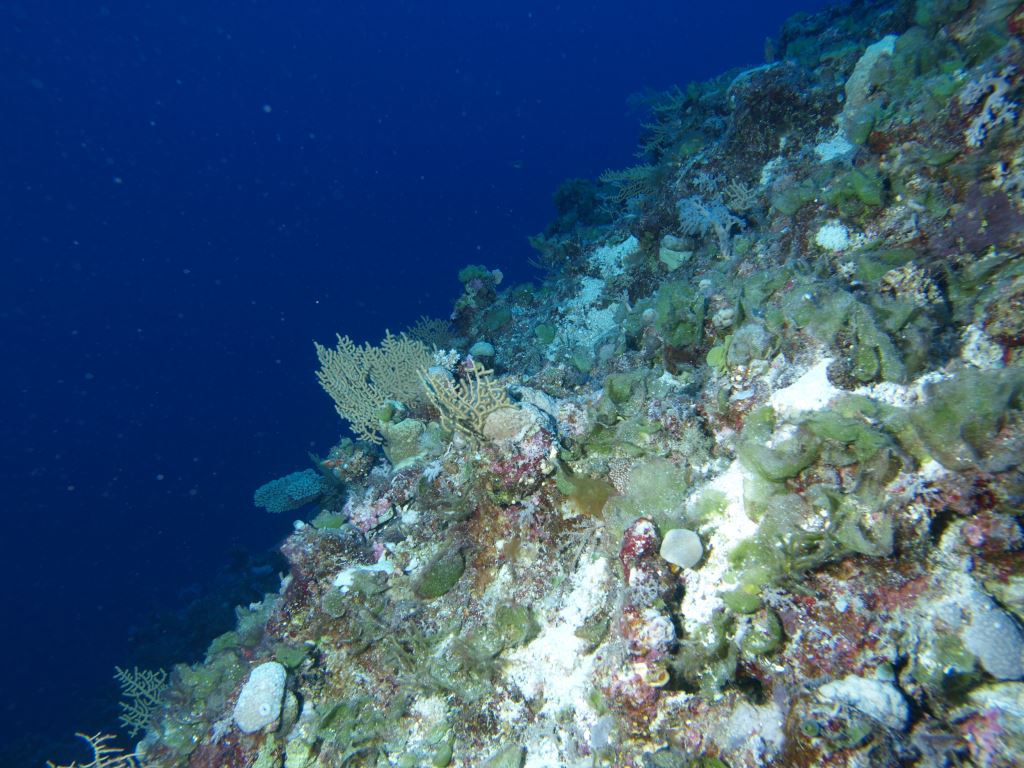|
|
Subtidal coral (undifferentiated) on unconsolidated substrate in very deep waterShort descriptionSubtidal mesophotic coral ecosystems on unconsolidated substrate in very deep water. Disclaimer: Ecosystem type descriptions are based on biophysical attributes identified in Central Queensland through expert advice and supported by scientific literature. Not all ecosystem types are mapped based on current inventory, and many of the ecosystems described here may also occur in other parts of Queensland.
Classification categoriesSelect from the links below to view related ecosystem type categories Long descriptionSubtidal undifferentiated mesophotic coral ecosystems (MCEs, i.e. low light coral ecosystems) on unconsolidated or intermediate substrate in very deep water (below 30 metres depth). Mesophotic coral ecosystems typically occur on old shorelines, in deeper paleochannels etc. Hard corals if present are more likely to occur on boulders and gravel (e.g. coral rubble), as based on limited inventory of MCEs to date. Macrobiota other than macroalgae is largely absent on mud and sand. Therefore, based on limited inventory to date, it is not known whether this is a valid type where it occurs on mud and sand[2]. Potentially if corals were present in this unconsolidated ecosystem type (‘inter-reefal’ or ‘non-reefal’) they would include reefal garden, hard corals growing on boulders or gravel (such as coral rubble), soft corals (e.g. Dendronephthya spp.) or other octocorallians* based on dominant taxa, with subdominants including sponge/bryozoan garden. In the central Great Barrier Reef, seaward of the 80 metre depth reefs were unconsolidated substrates, include 40 per cent rhodolith fields, gravel and sand, interspersed with limestone pinnacles[2]. *Octocorallia is a subclass of the class Anthozoa in the phylum Cnidaria, and include soft corals, gorgonians, sea whips, sea pens, sea fans and octocorals. Like some of the many other anthozoans, octocorallians are sessile polyp-bearing animals with a mobile larval phase. Octocorallians are distinguished by the eight (i.e. octo) tentacles in each polyp. Most octocorallians do not deposit a rigid calcium carbonate exoskeleton, and therefore tend to attach to reefs rather than contribute to reefal frameworks as per the reef building Scleractinian (hard) corals[3]. Special valuesMesophotic ecosystems are potentially refugia from disturbance for coral species also found on shallow water ecosystems and include species tolerant to low light levels. Forty-five per cent of shallow reef coral species also occur in the mesophotic[4]. These ecosystems can provide protection from coral bleaching, however the mechanism for reduced bleaching at depth is complicated and appears to be related to Water temperature and/or light levels. In general, MCEs are also a refuge from the physical damage associated with storms and cyclones (Energy magnitude), apart from very intense ones. Coral reefs and communities (including MCEs) are highly valued for their diverse flora and fauna, fish habitat values, as commercial fisheries. The values of Queensland’s coral reefs are internationally recognised in the World Heritage Great Barrier Reef and many MCEs are found within its boundaries. The Outstanding Universal Value of the Great Barrier Reef World Heritage area is based on four criteria (vii), (viii), (ix), (x). Coral taxa of MCEs in the northern Great Barrier Reef have high diversity and potentially can preserve evolutionary lineages of Indo-Pacific corals[4]. Diagnostic attributesInundation 'Subtidal' Benthic depth 'Very deep (>30m)' Structural macrobiota 'Hard/soft coral – undifferentiated' Consolidation 'Unconsolidated', 'Intermediate', 'Unknown' QualifiersPotentially Naturalness qualifiers are relevant. Being able to be shifted by mechanical action means that these ecosystems can be potentially modified by trawling or dredging. DistributionA continuous line of submerged reefs extends along much of the shelf edge of the Great Barrier Reef in very deep waters[1]. In the central Great Barrier Reef, surveys of mesophotic community structure on mud and sand substrates revealed either low cover of structural macrobiota, bare substrate or calcareous macrophytic algae Halimeda[2]. There is very little data for MCEs south of Townsville due to limited surveys. Deep water corals are most likely to occur in the lower latitudes. Lower latitude waters tend to have higher light levels than higher latitudes (everything else equal) due to the angle of the light and reduced path length through the water column (P. Muir, pers. comm.). Deep water corals may also occur in shaded microhabitats at higher latitudes, which also indicates the low light tolerance of these corals[4]. The flat tops of the ridges provided the best light for corals deriving their food from photosynthesis (phototrophic) and the steep slopes and sides of the ridges were dominated by corals capable of capturing planktonic prey (heterotrophic)[2]. CommentsVery deep water depth is associated with low light levels. Other attributes include Morphology, Terrain slope and Water temperature. Additional InformationWhat are Mesophotic Coral Ecosystems? - National Oceanic and Atmospheric Administration Mapping the life mesophotic - Marine Biodiversity Hub References
Last updated: 11 July 2019 This page should be cited as: Department of Environment, Science and Innovation, Queensland (2019) Subtidal coral (undifferentiated) on unconsolidated substrate in very deep water, WetlandInfo website, accessed 30 August 2024. Available at: https://wetlandinfo.des.qld.gov.au/wetlands/ecology/aquatic-ecosystems-natural/estuarine-marine/descriptions/95/ |

 — Department of Environment, Science and Innovation
— Department of Environment, Science and Innovation


